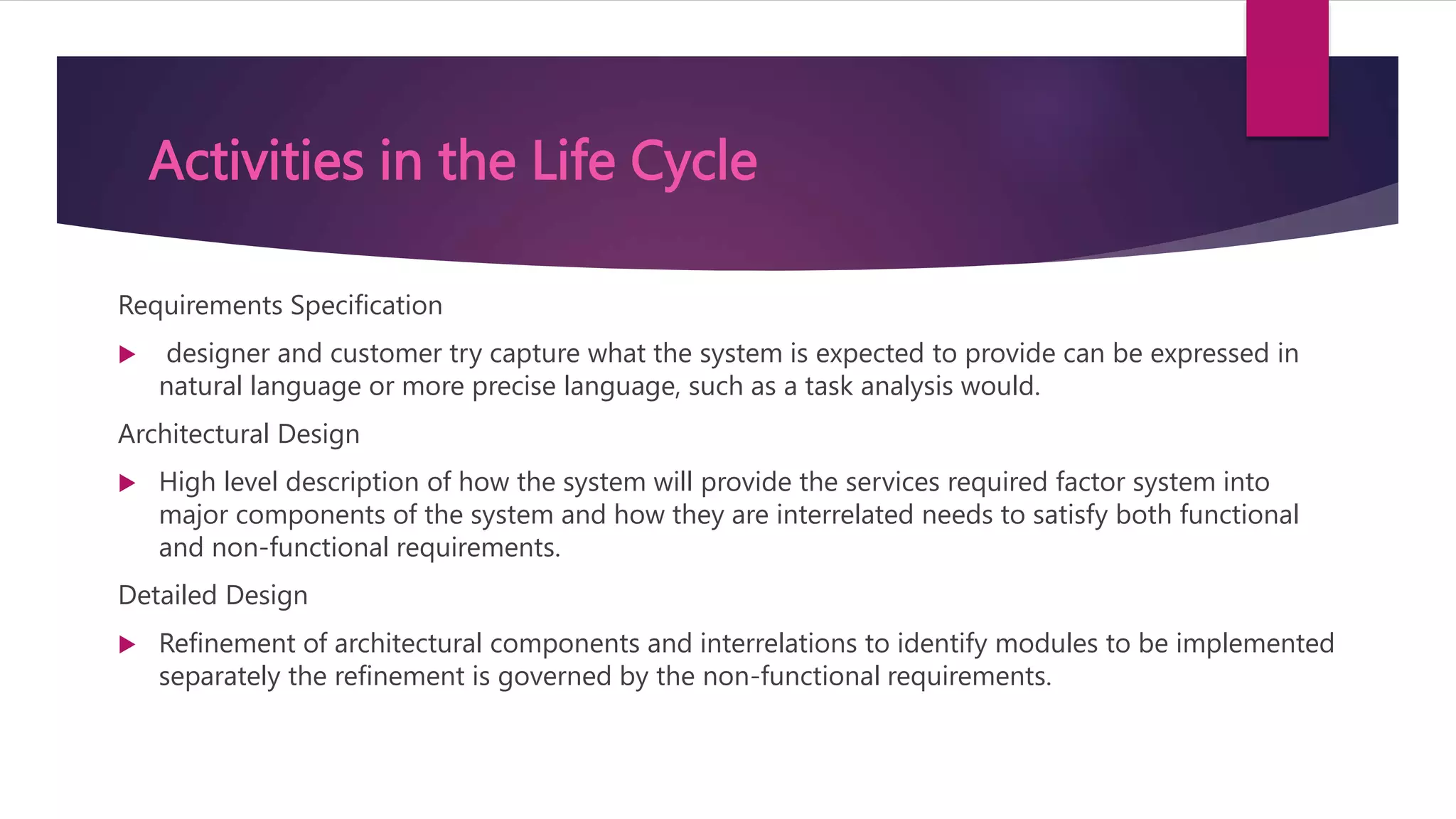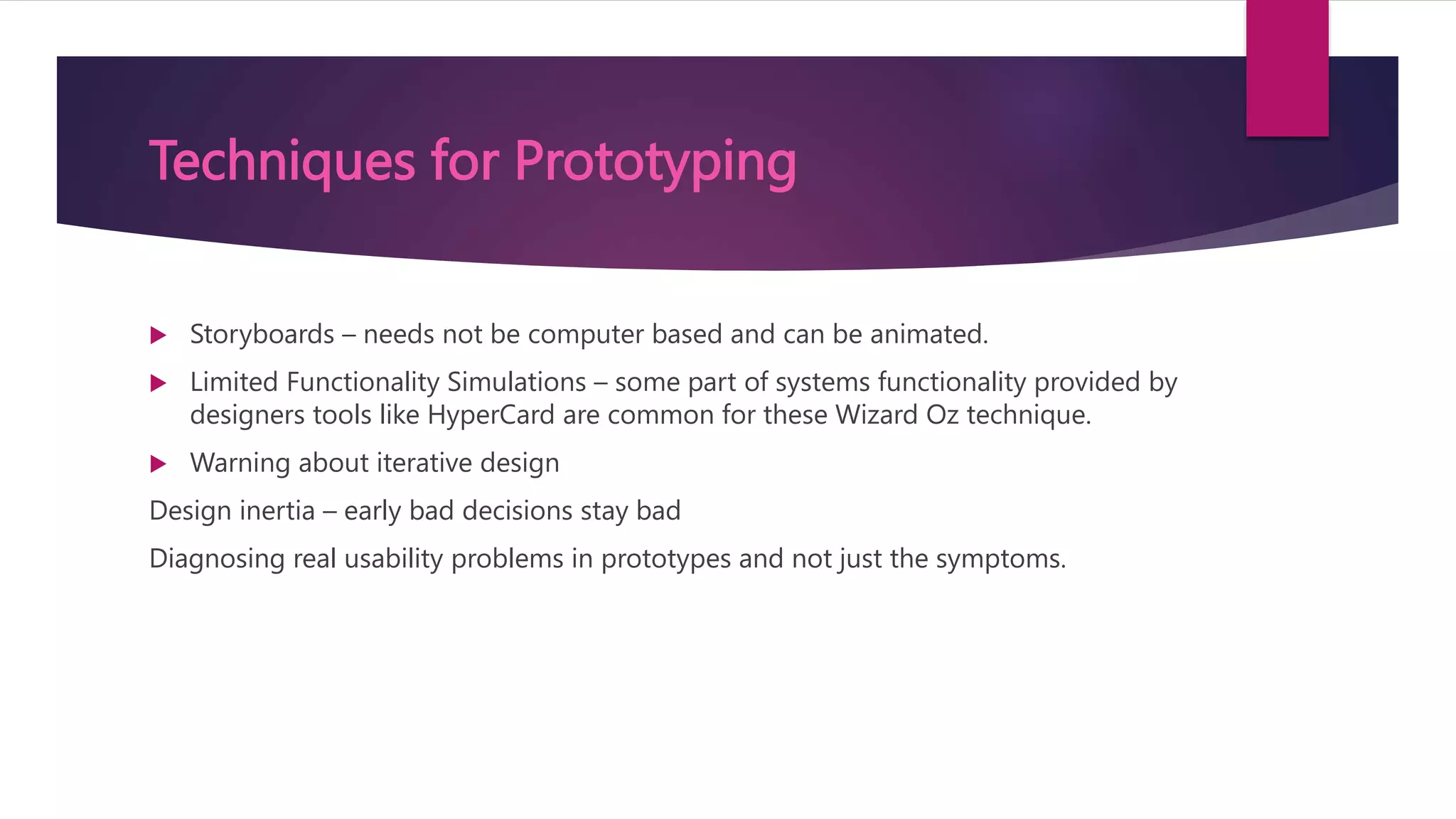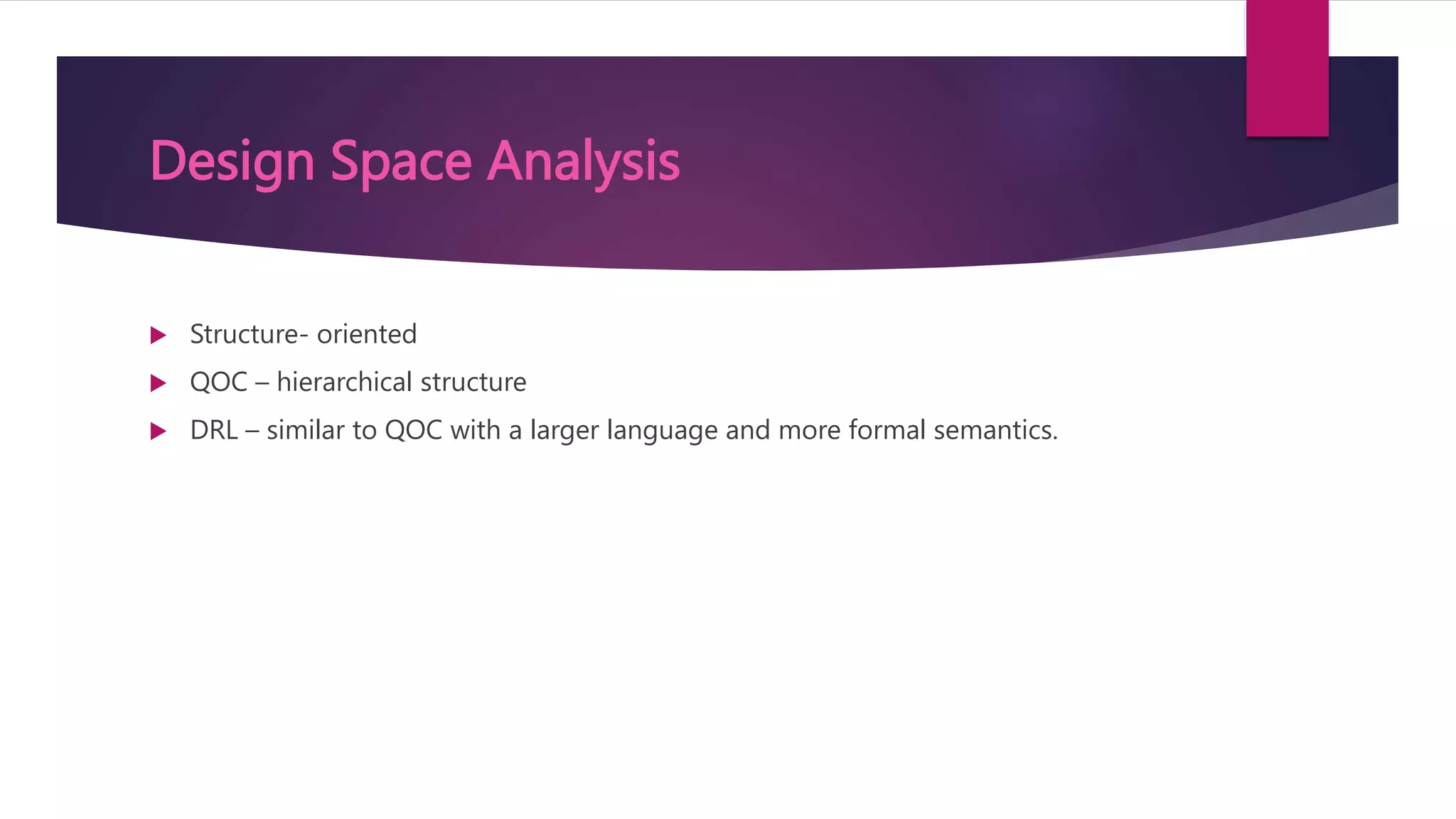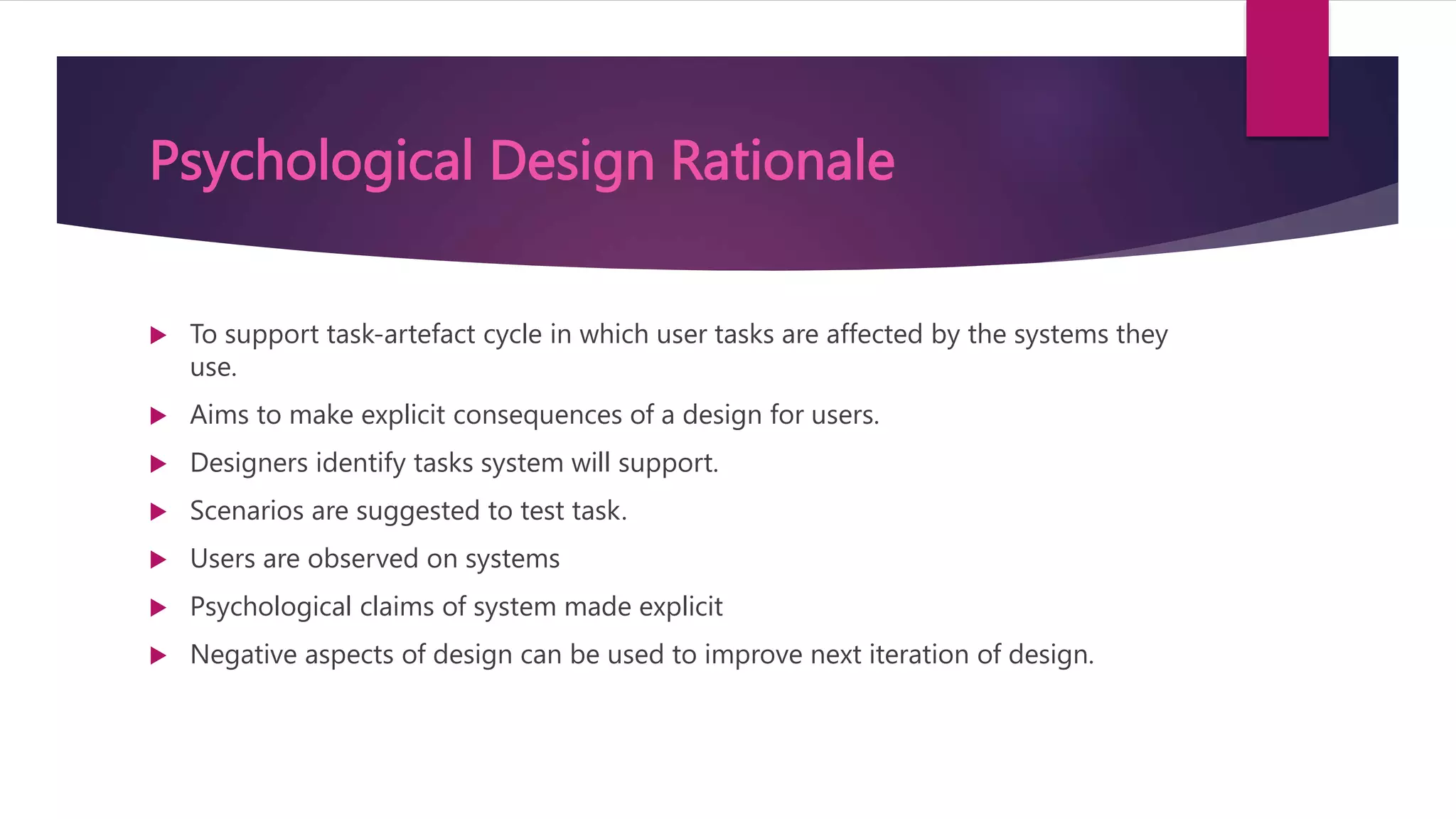The document discusses HCI in the system software development lifecycle. It describes several key stages in the lifecycle including requirements specification, architectural design, detailed design, verification and validation. It also discusses usability engineering, iterative design and prototyping techniques, design rationale documentation approaches like IBIS and QOC notations, and capturing psychological design rationale through user testing. The overall goal is to integrate usability considerations throughout the entire software development process from requirements to implementation.





















